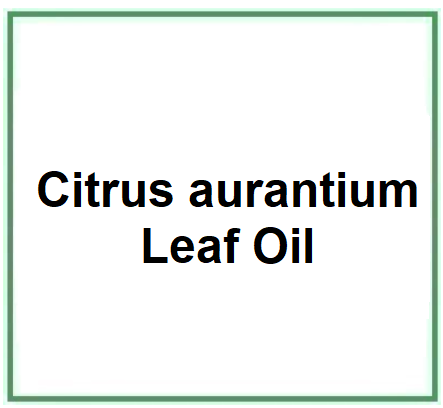Citrus aurantium Leaf OilThe essential oil extracted from the leaves of Citrus aurantium, also known as bitter orange or bergamot, has a variety of uses, including in aromatherapy, skincare products, ...
Citrus aurantium Leaf Oil
The essential oil extracted from the leaves of Citrus aurantium, also known as bitter orange or bergamot, has a variety of uses, including in aromatherapy, skincare products, and perfumery. It is renowned for its distinctive aroma and beneficial properties.
The name describes the structure of the molecule
- "Citrus aurantium" is the botanical name for bitter orange.
- "Leaf Oil" indicates that the oil is derived from the plant's leaves.
Description of raw materials used in production
The leaves of Citrus aurantium serve as the primary raw material for oil extraction. These leaves are harvested from the plant and subjected to a distillation process.
Synthesis process
- Leaf collection - The leaves of Citrus aurantium are harvested from the plant.
- Steam distillation - The leaves are then subjected to steam distillation, a process that separates the essential oil from the water in the leaves.
- Separation - After distillation, the essential oil is separated from the water and collected.
- Packaging - The essential oil is then packaged in suitable containers and sealed for sale or for use as an ingredient in various products.
What it is for and where
Cosmetics
Perfuming. Unlike fragrance, which can also contain slightly less pleasant or characteristic odours, the term perfume indicates only very pleasant fragrances. Used for perfumes and aromatic raw materials.
CAS 72968-50-4
EC number 277-143-2
Applications
Aromatherapy
- Relaxation and Stress Relief: The oil has a calming effect and is often used to reduce symptoms of anxiety and promote relaxation.
- Uplifting: Its fresh, woody, and slightly floral aroma can help uplift mood and alleviate feelings of sadness or lethargy.
Cosmetics and Skin Care
- Toning: It can help tone and balance the skin, making it useful in formulations for oily or combination skin.
- Fragrance: Due to its distinct, pleasing aroma, it's used in perfumes, colognes, and scented body care products.
Traditional Medicine
- Antiseptic: Historically, it has been used for its antiseptic properties to treat minor cuts and wounds.
- Antispasmodic: Used traditionally to reduce spasms or cramps.
Other Uses
- Natural Deodorizer: The oil's pleasant scent can be used in natural deodorants or room sprays.
![]() Citrus aurantium Leaf Oil
Citrus aurantium Leaf Oil 
